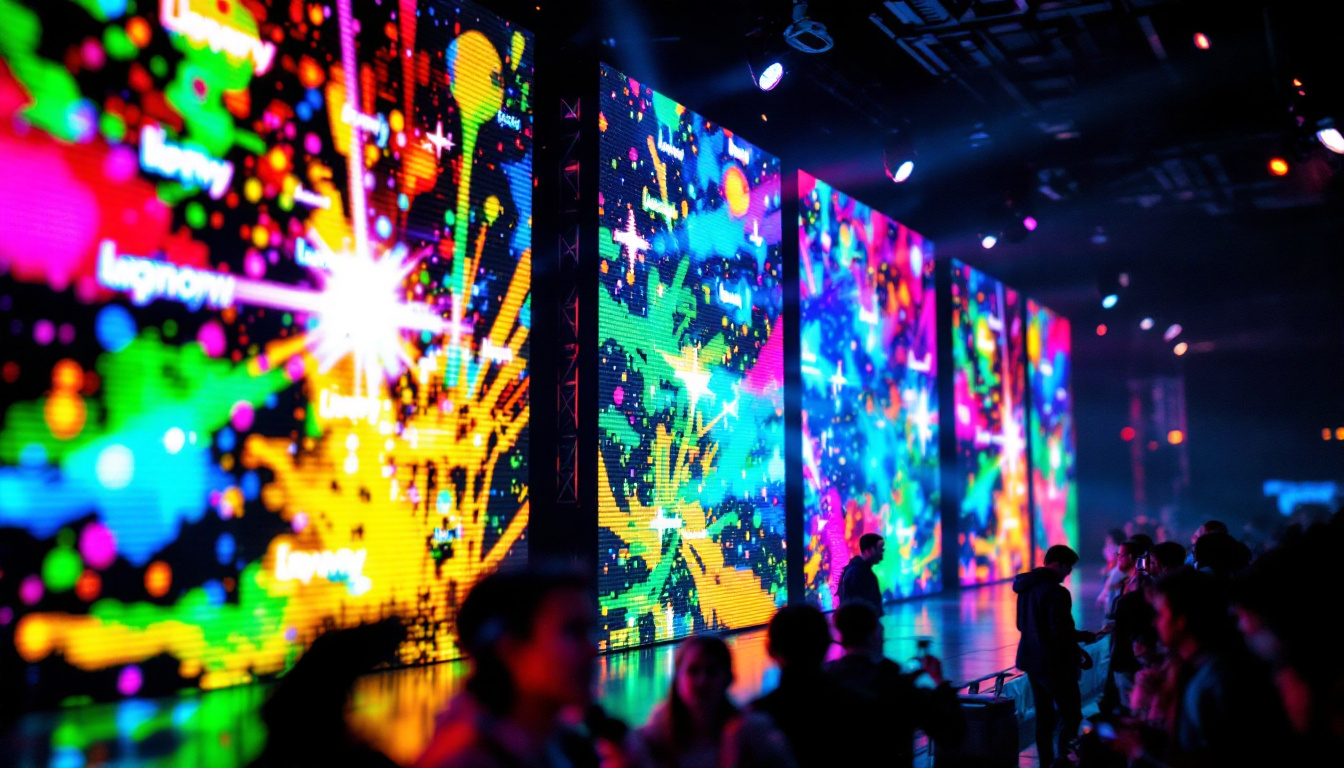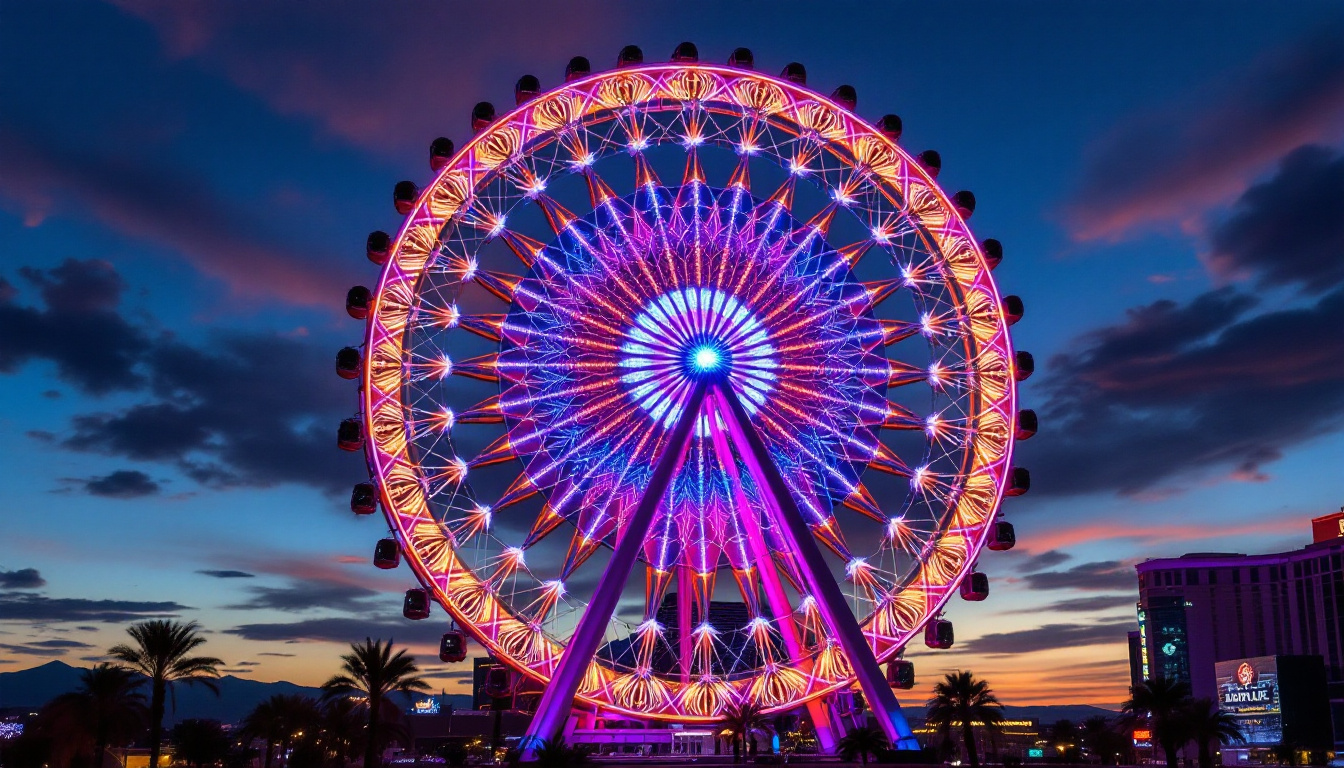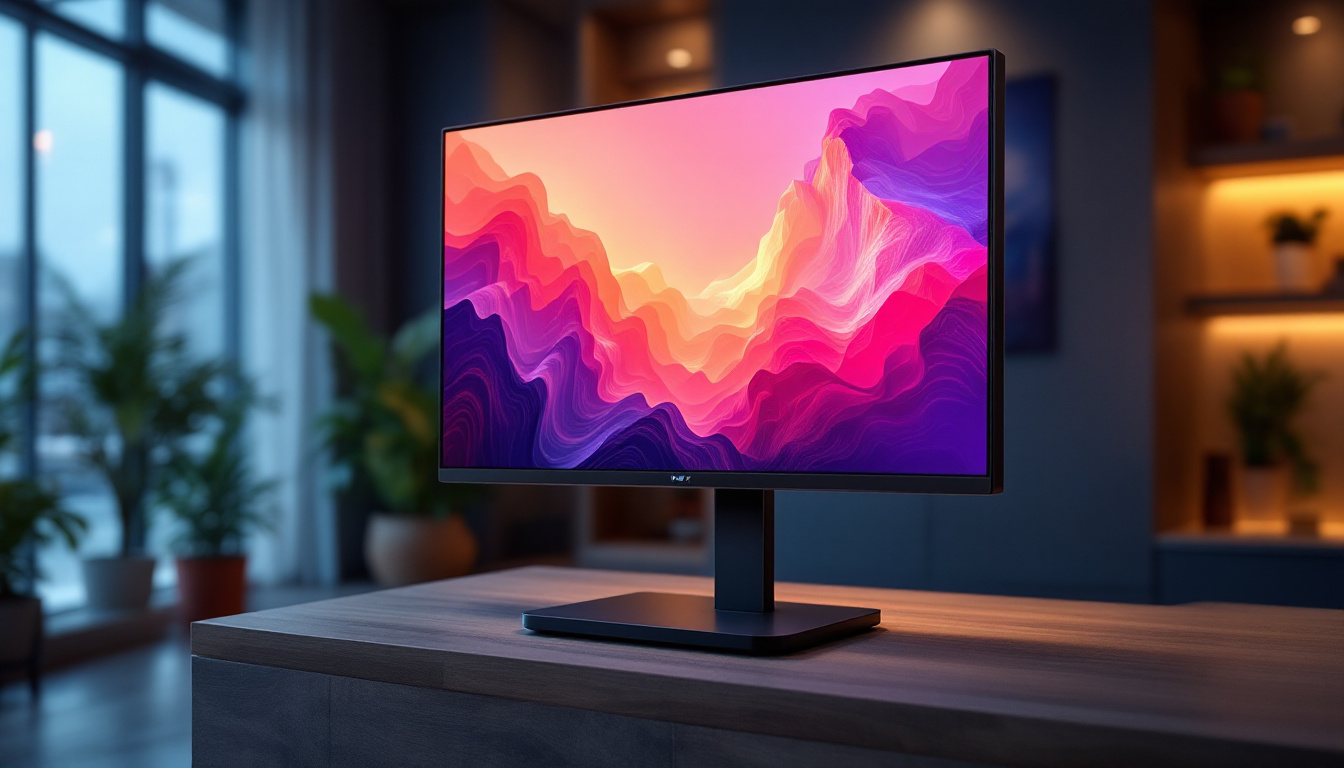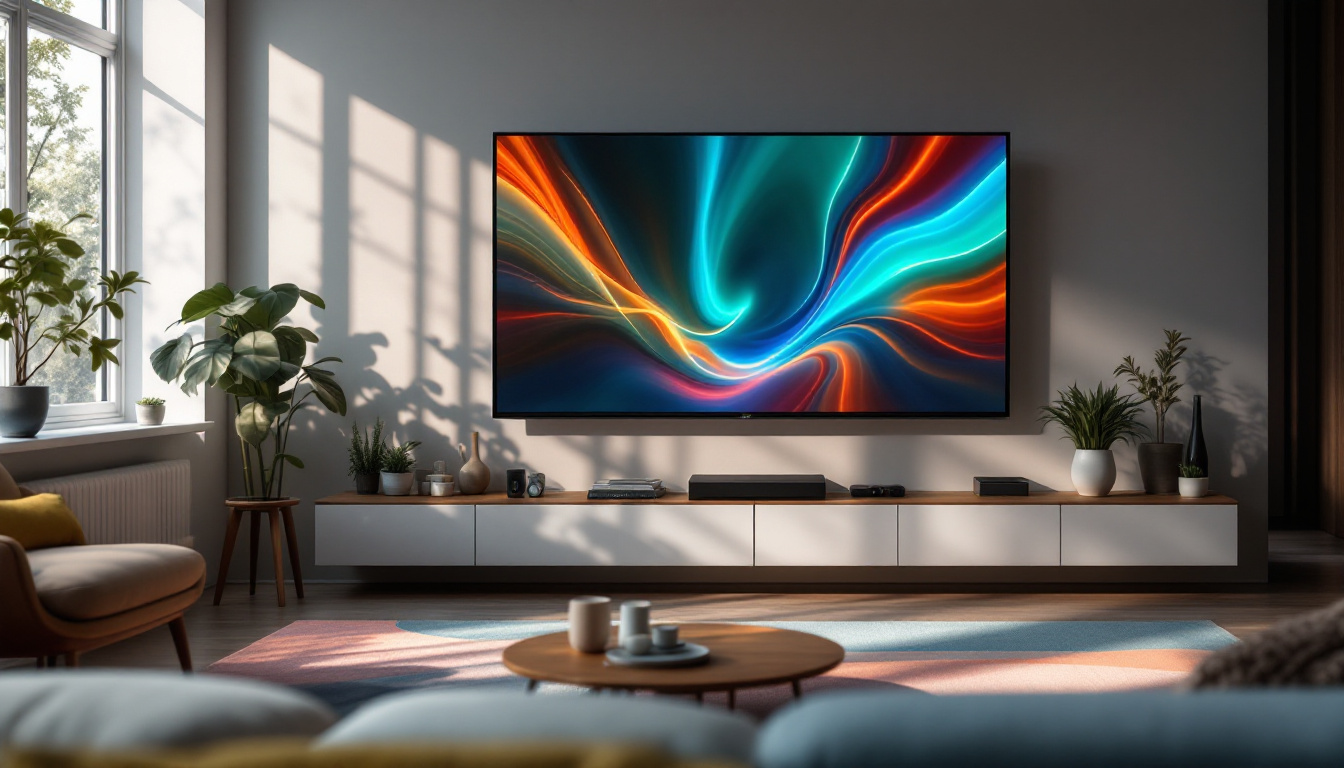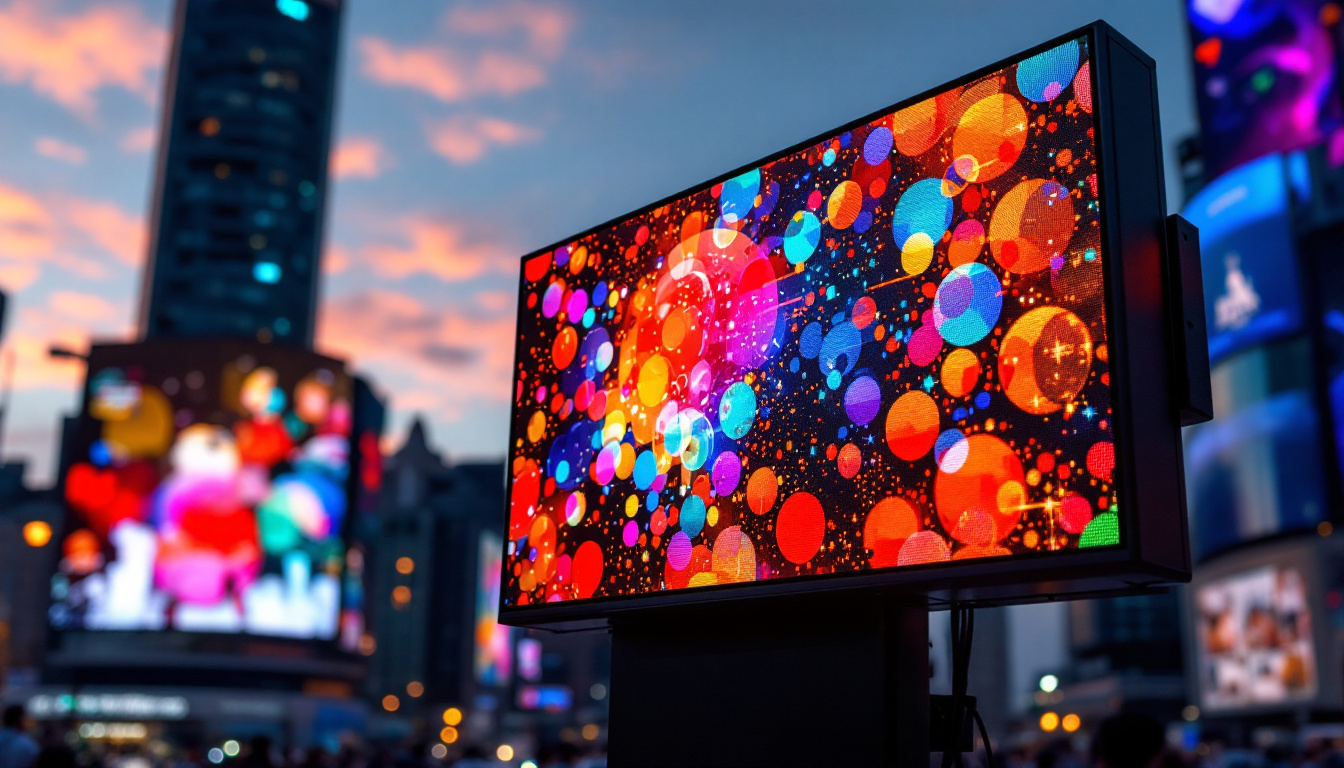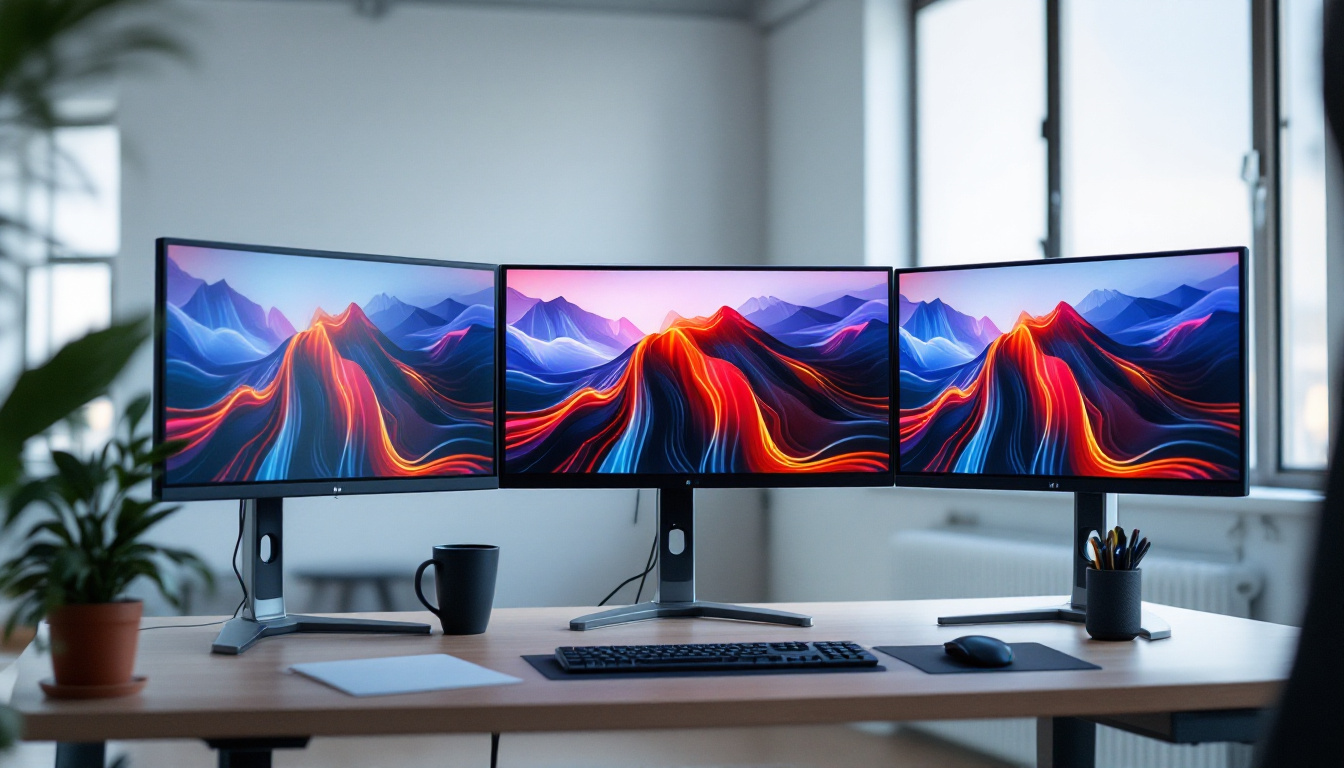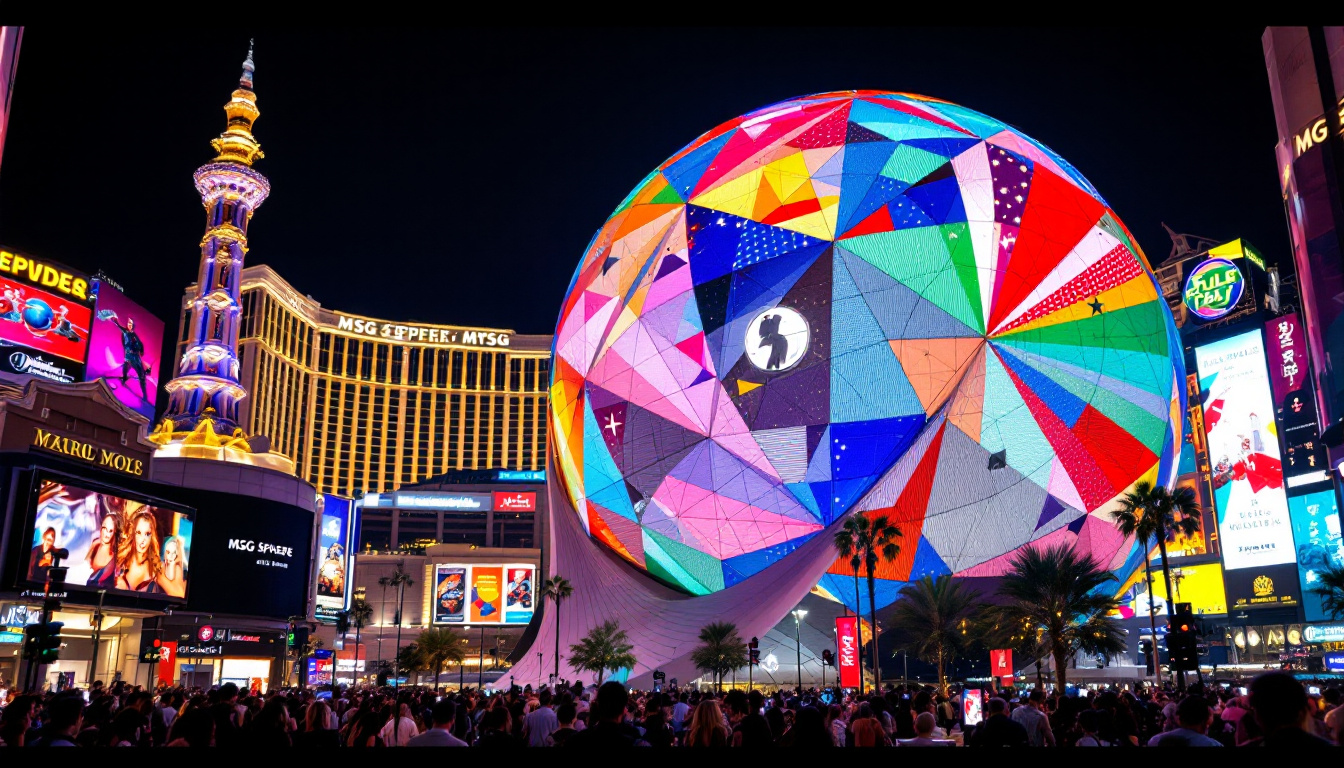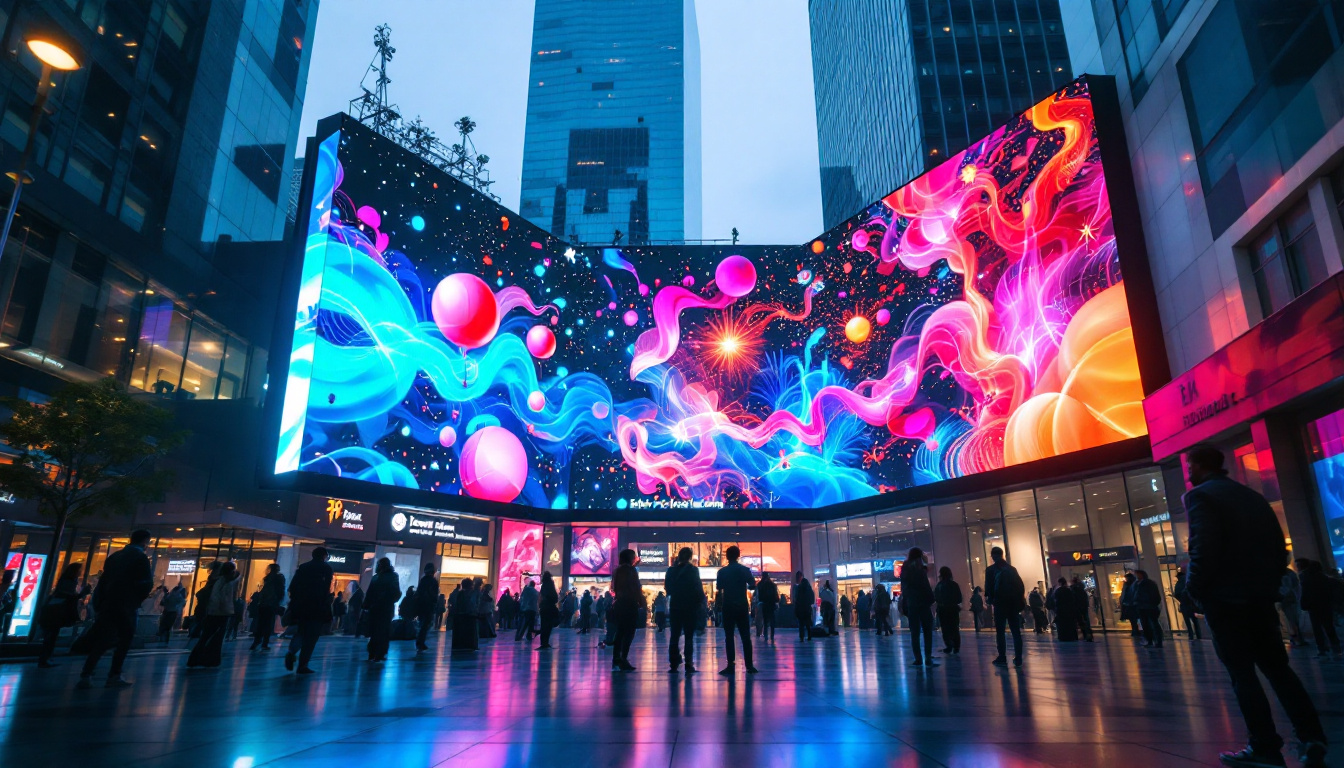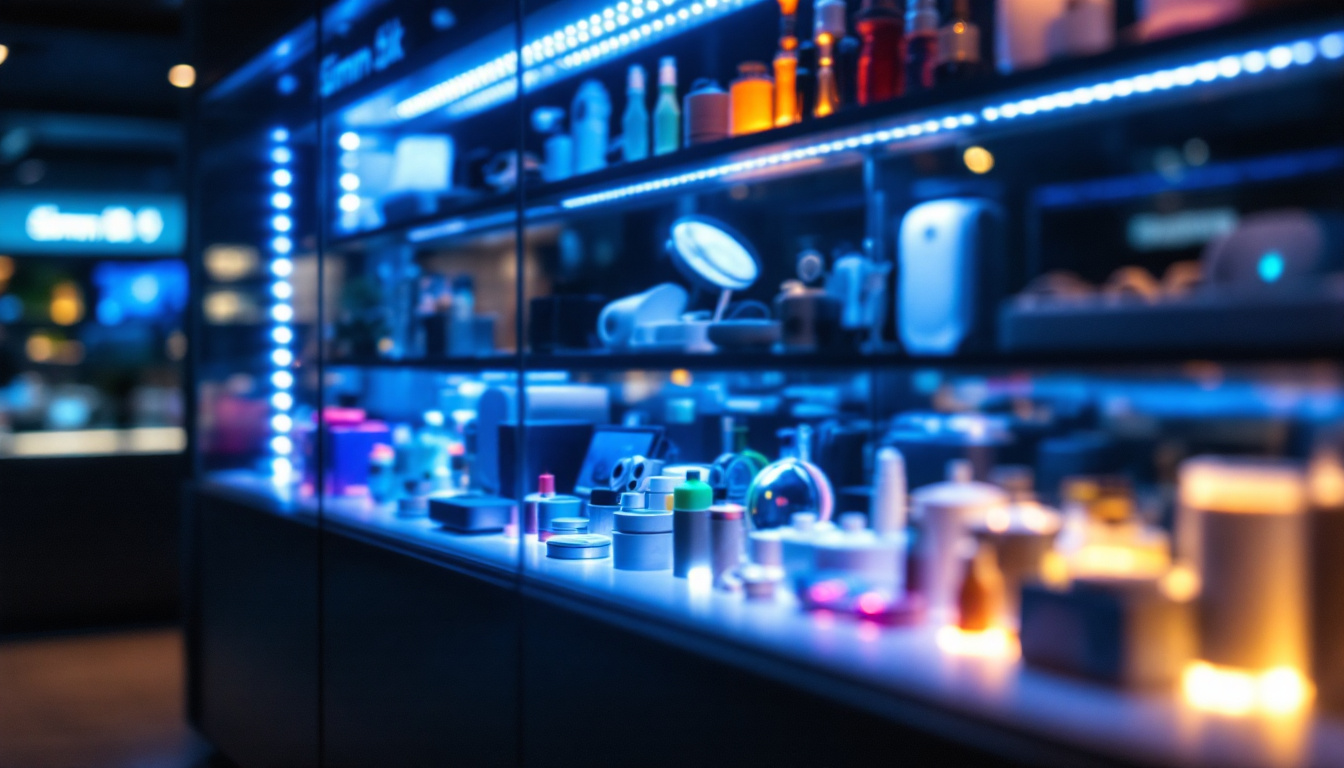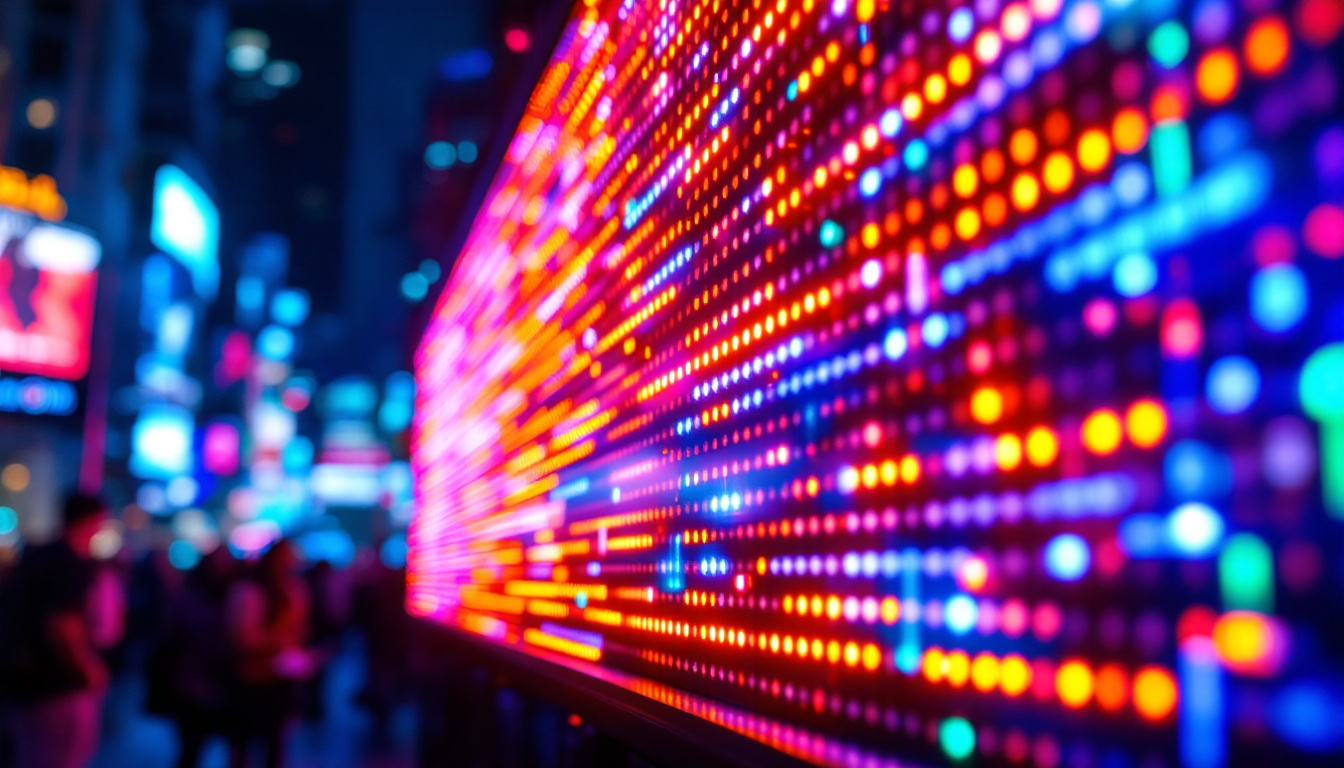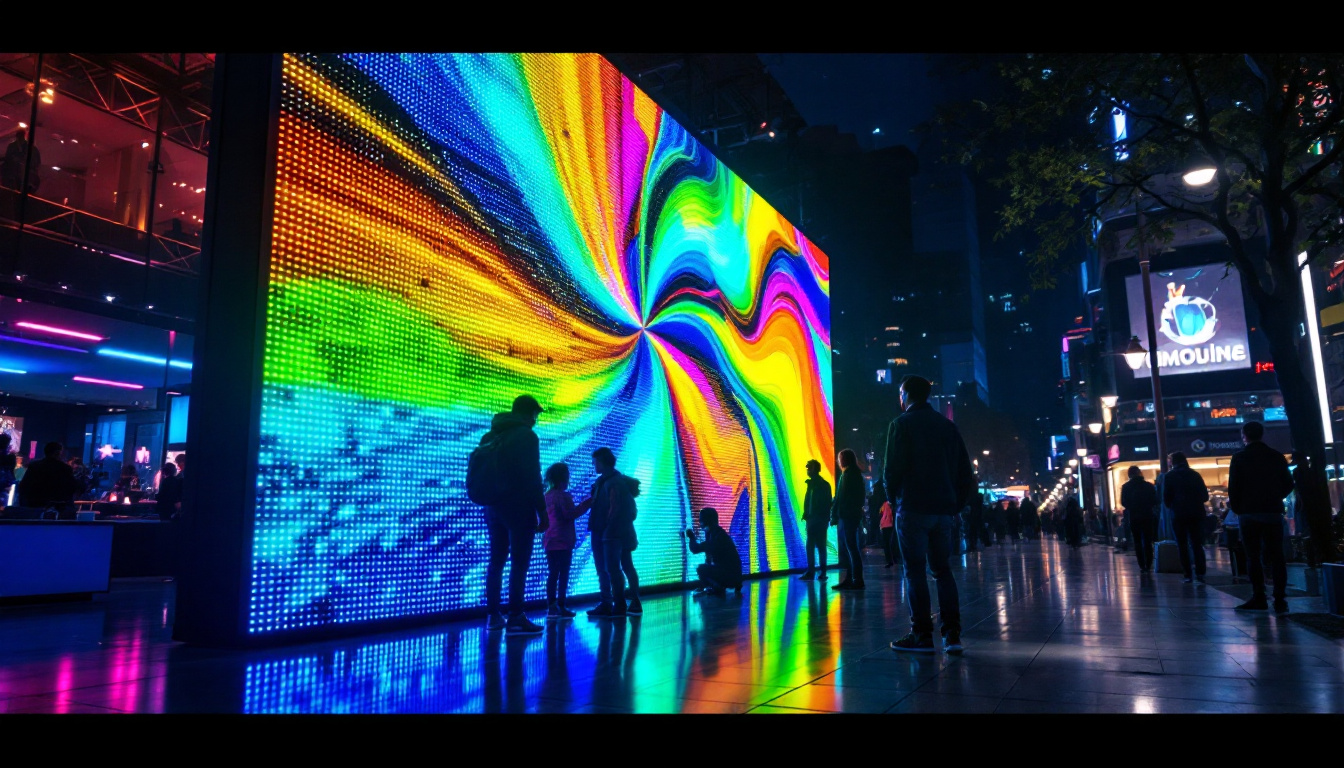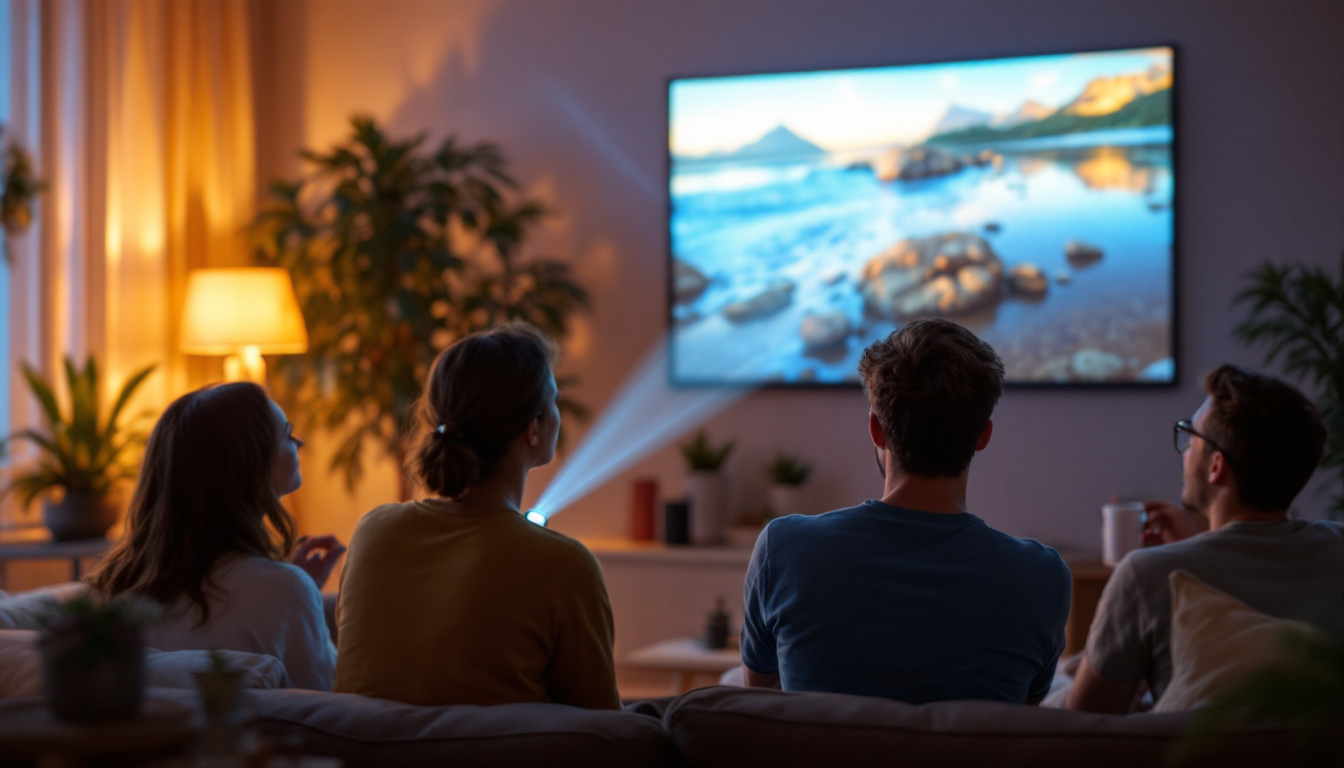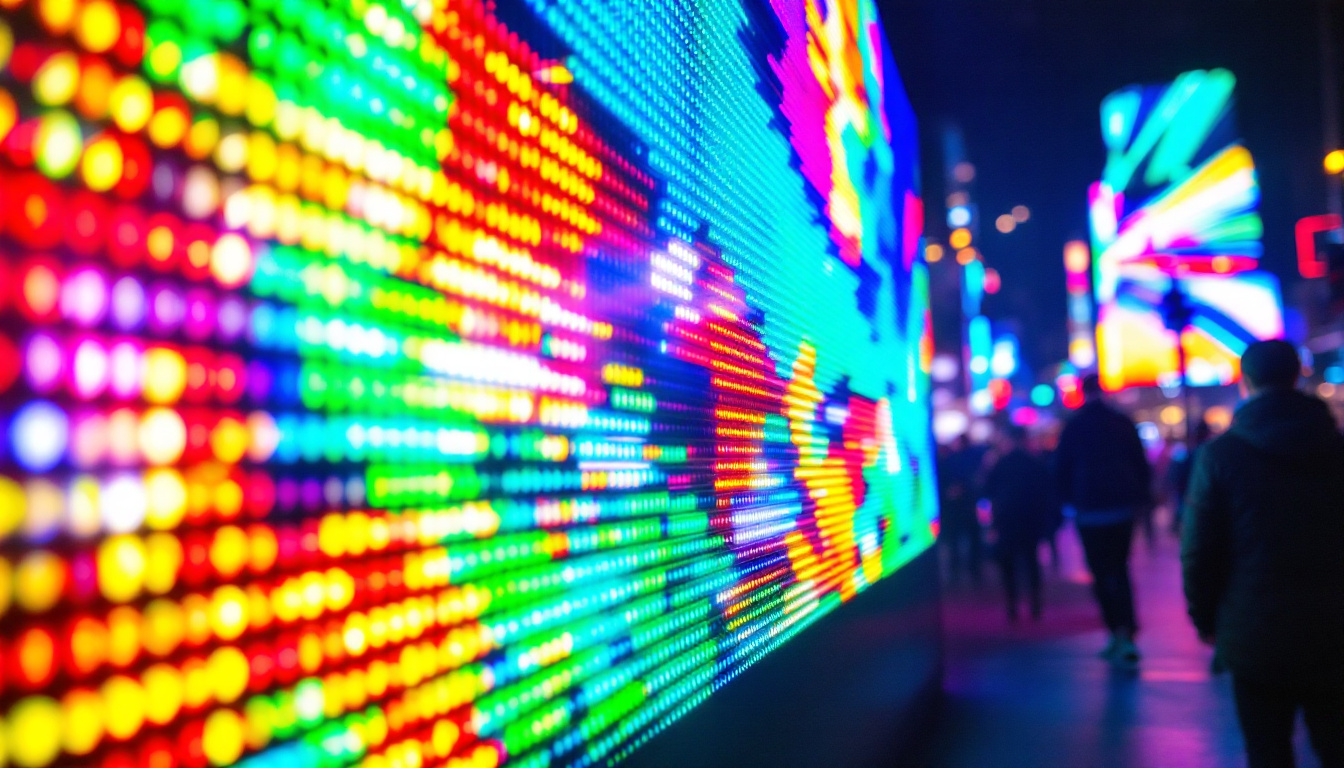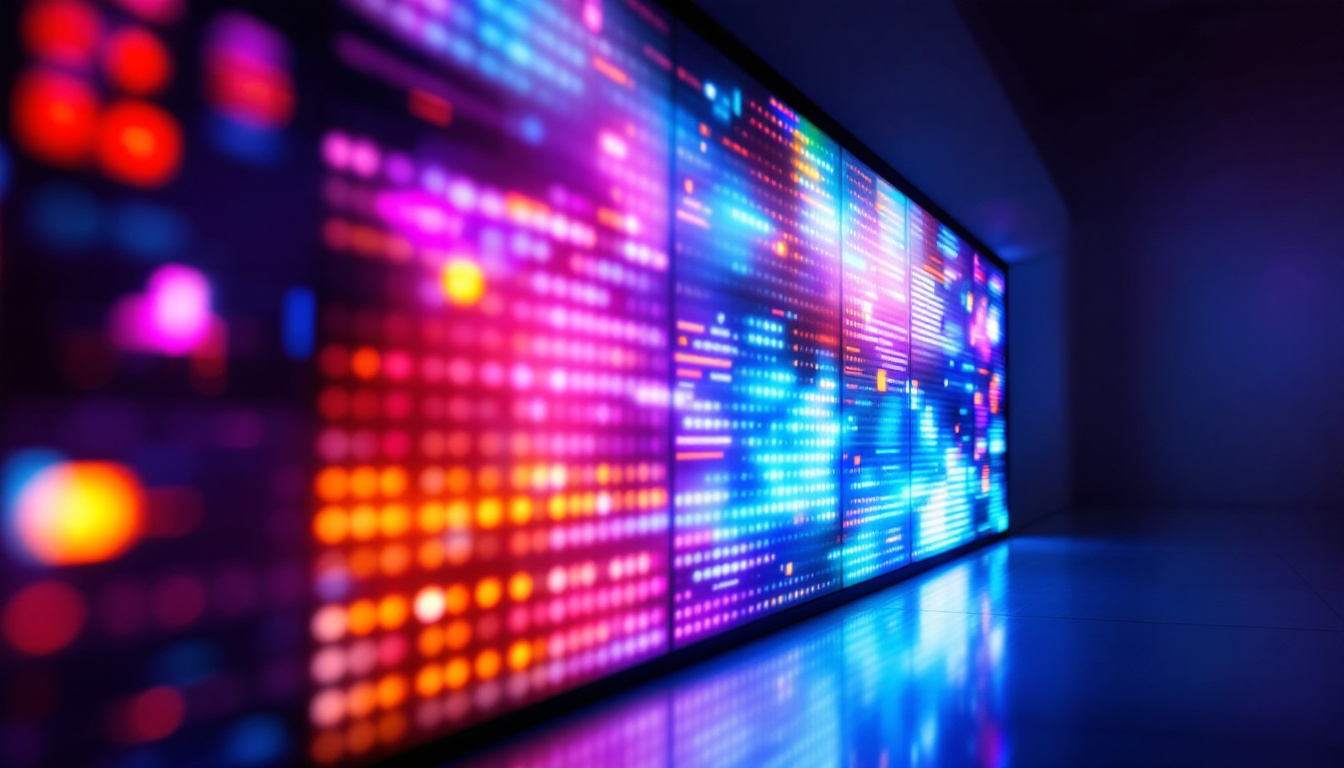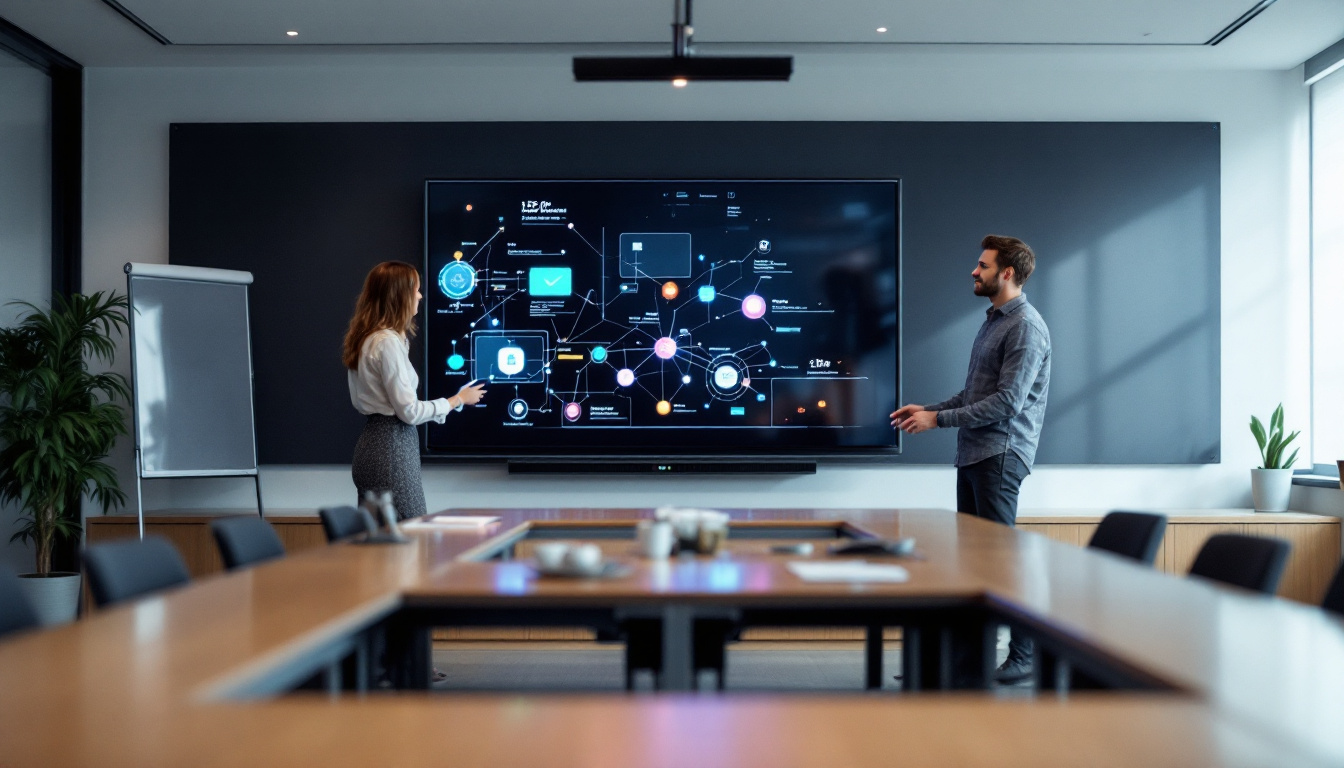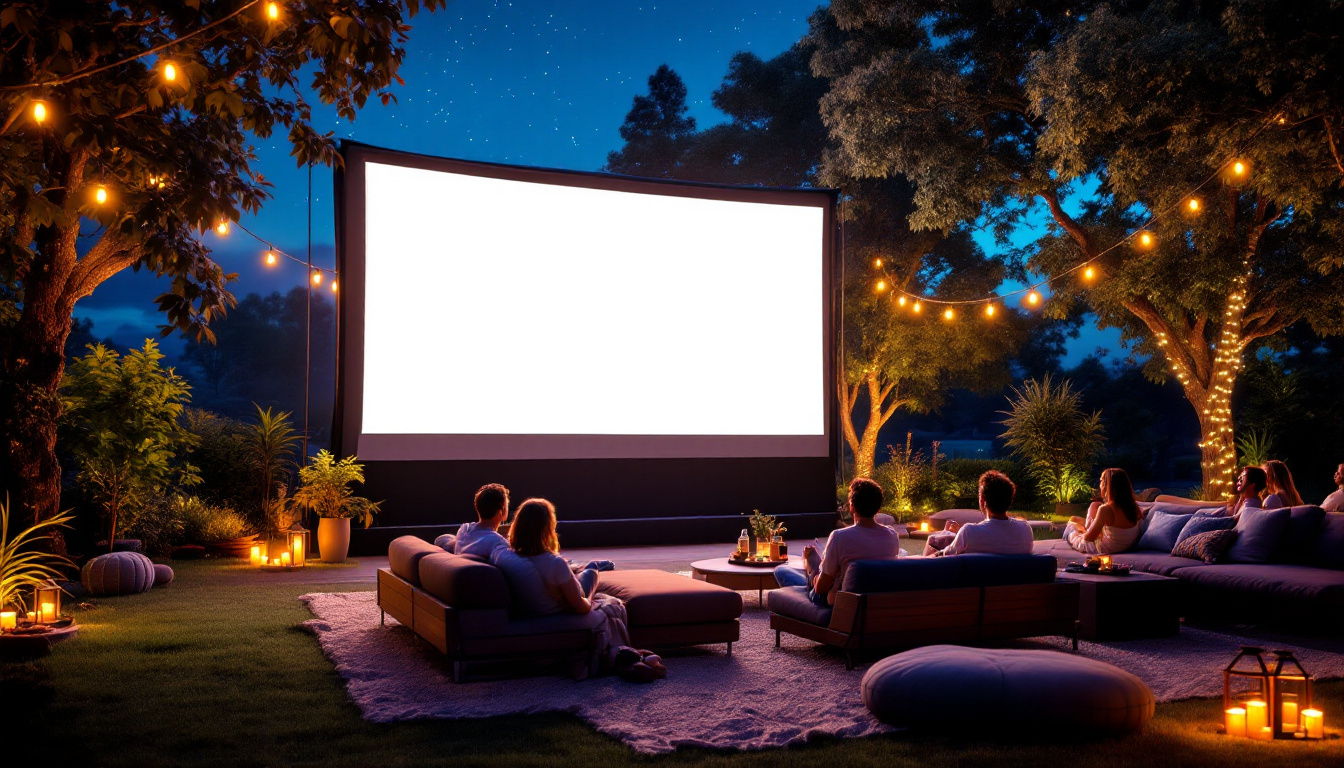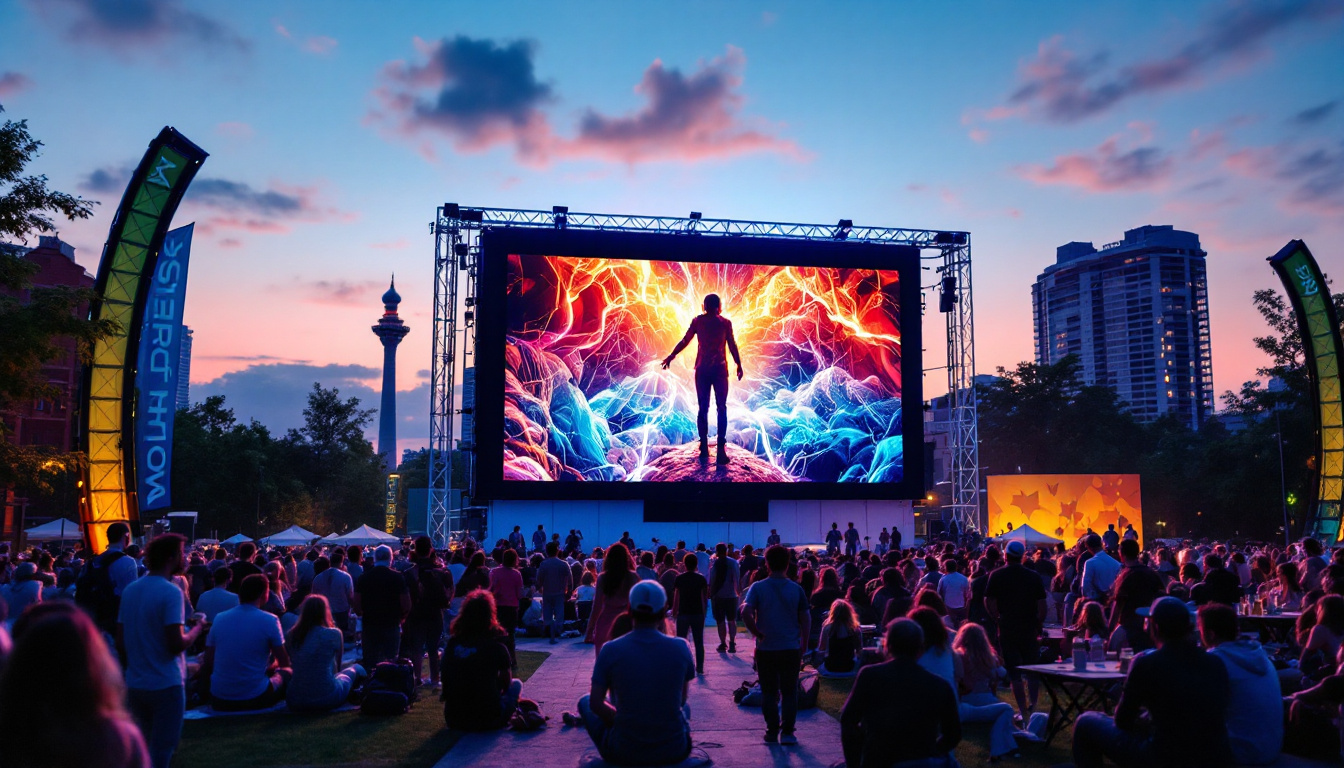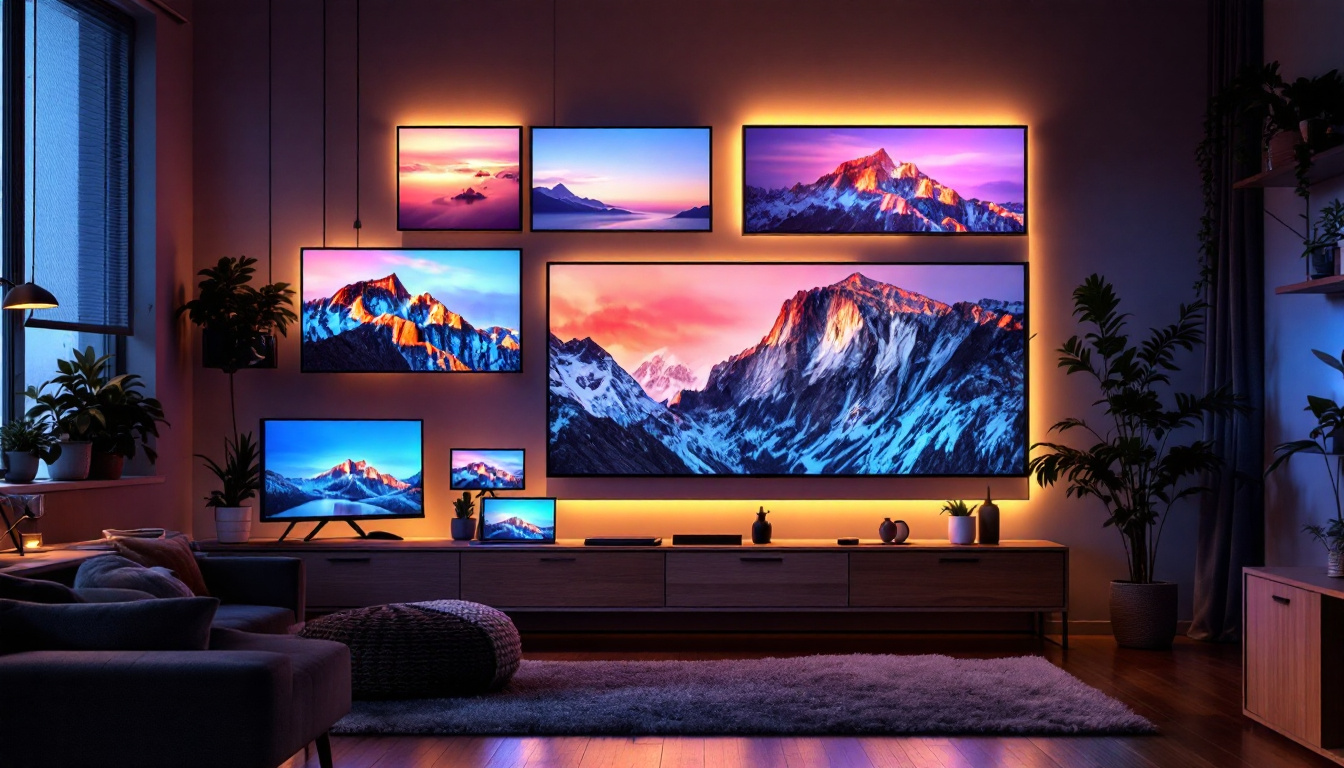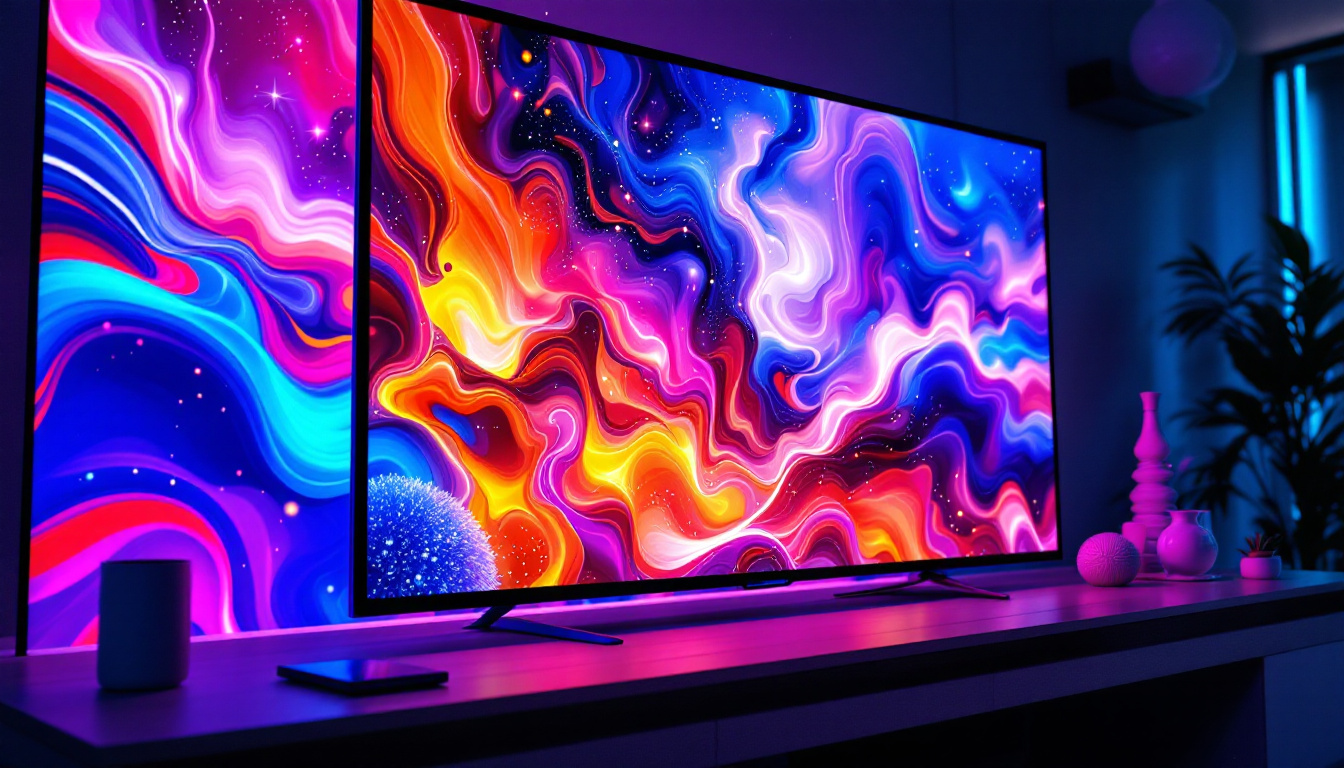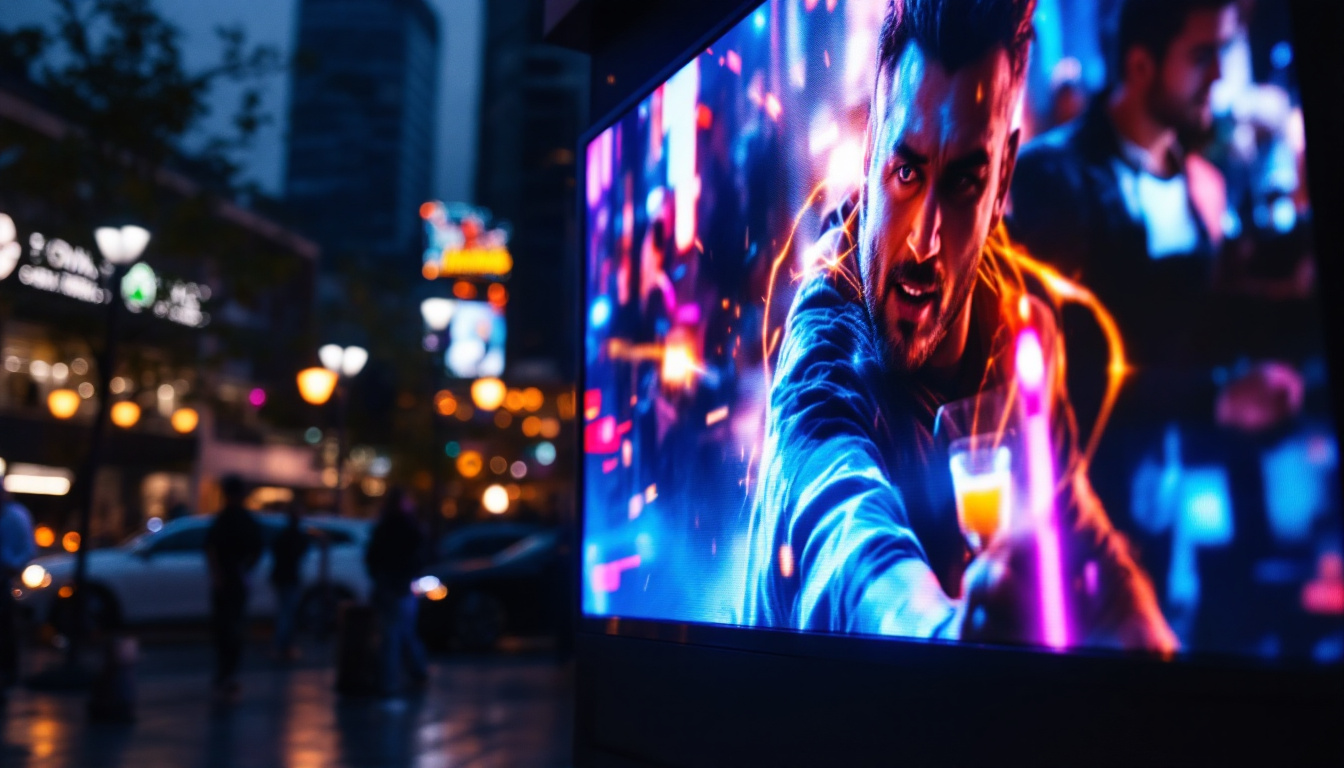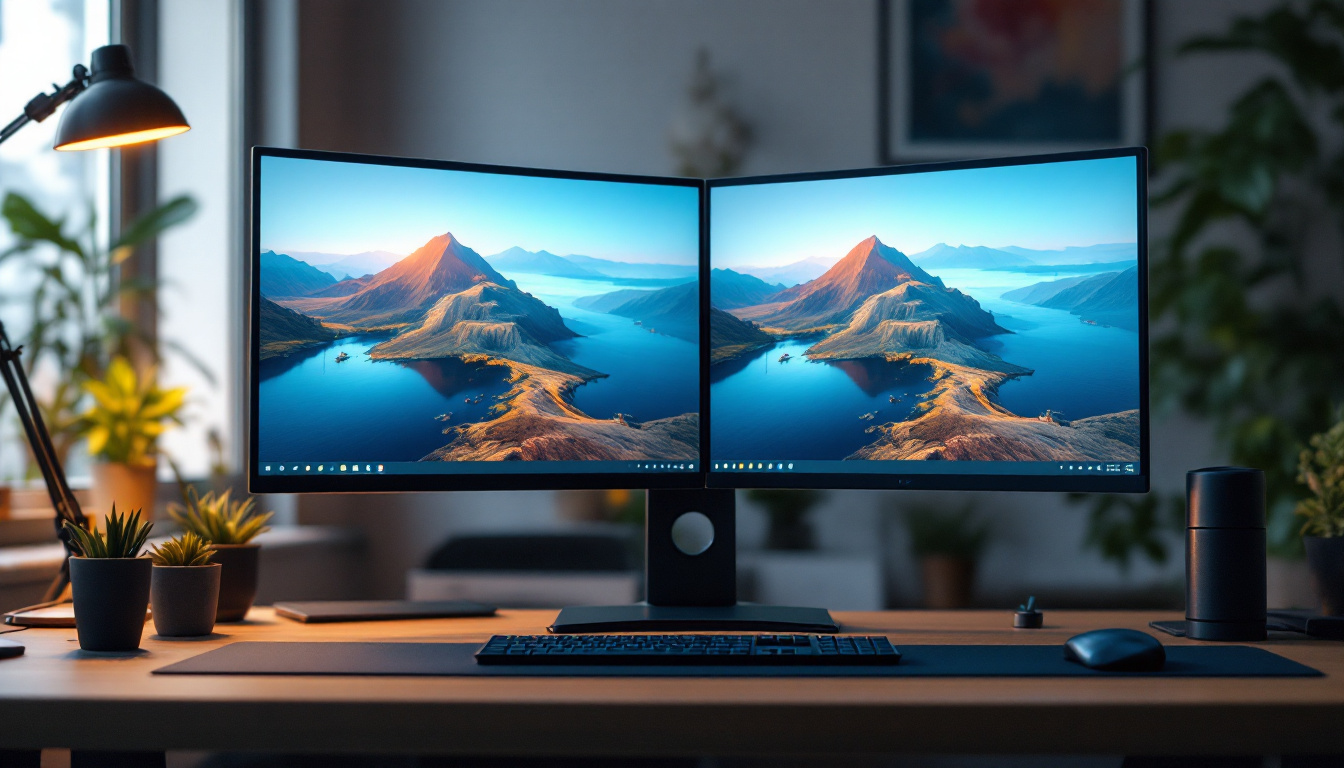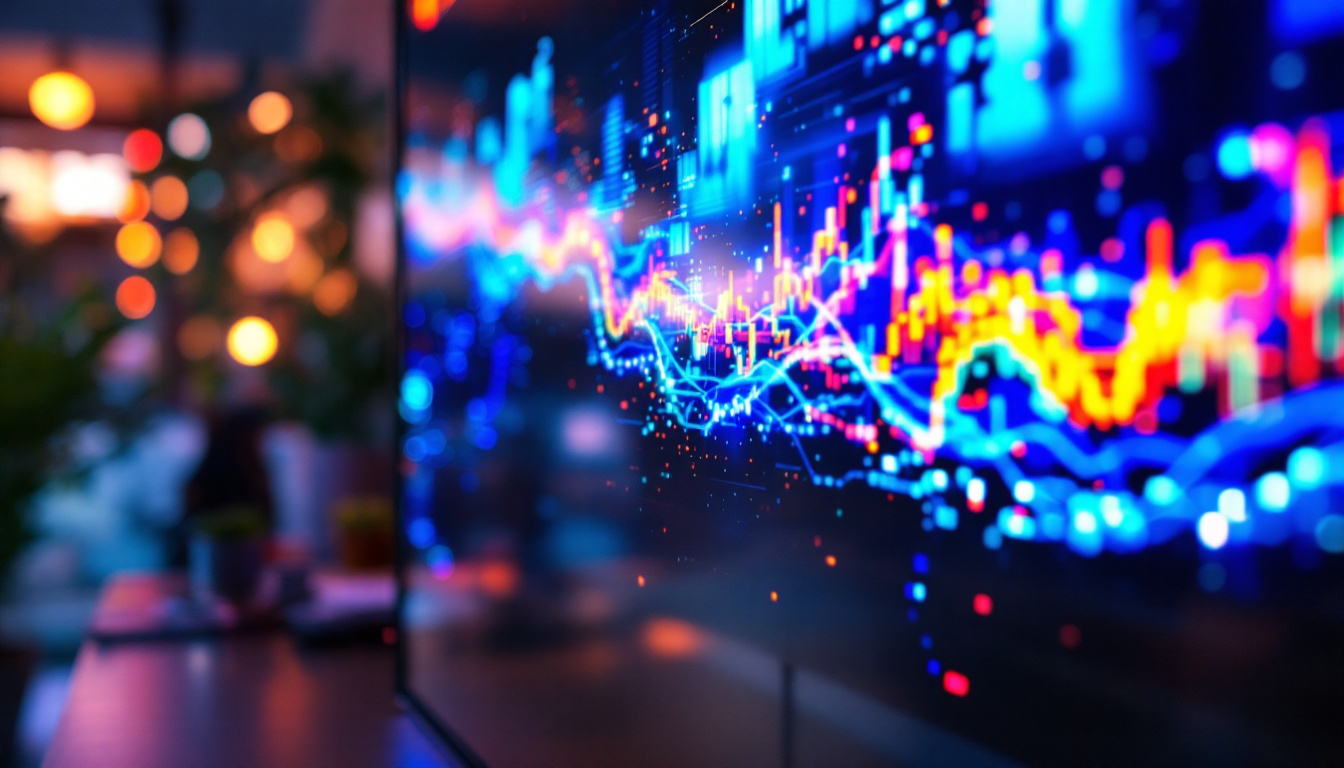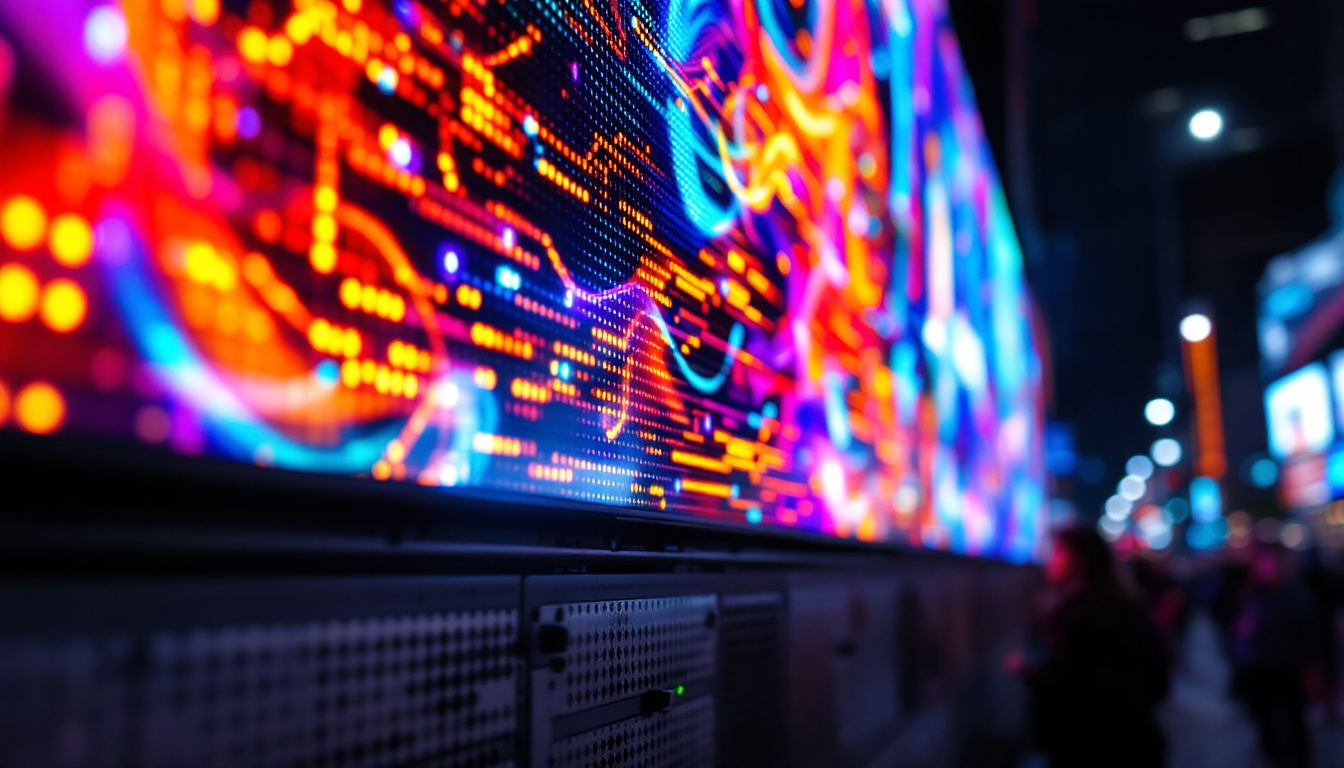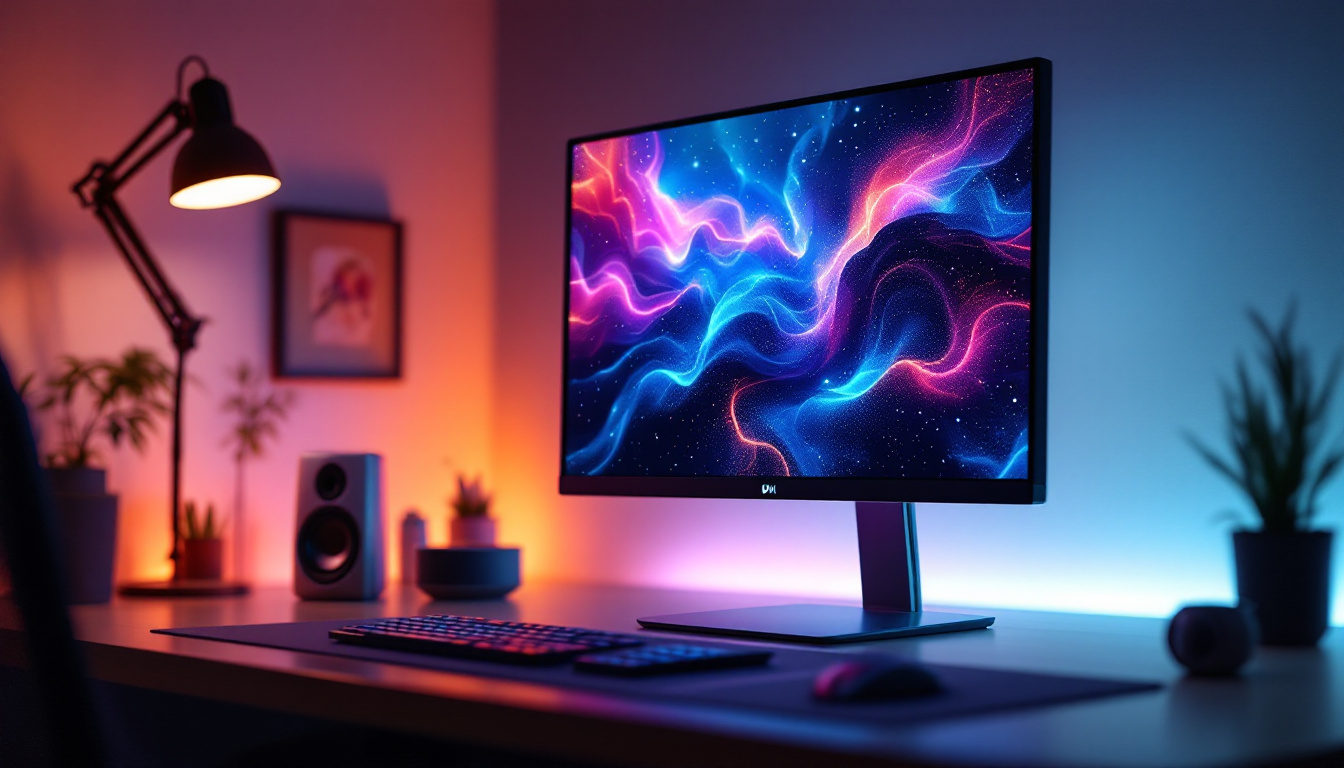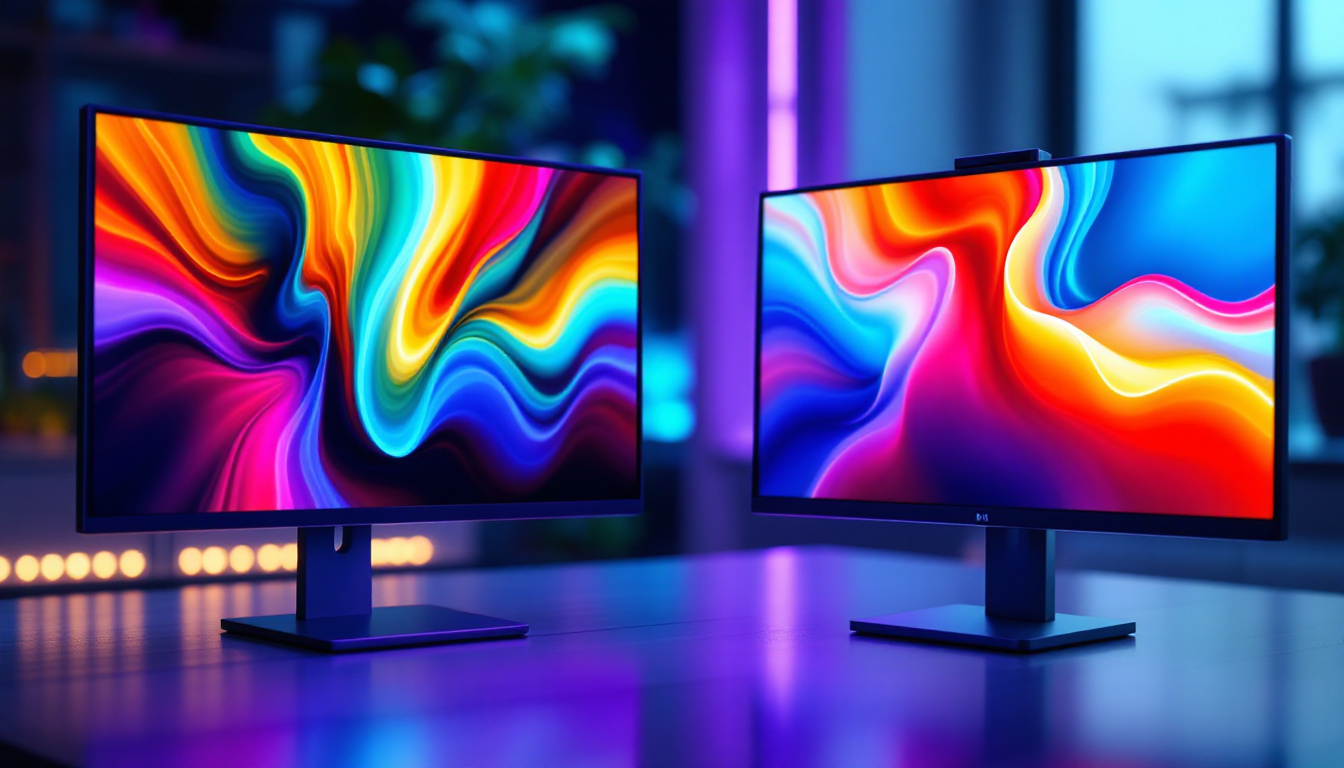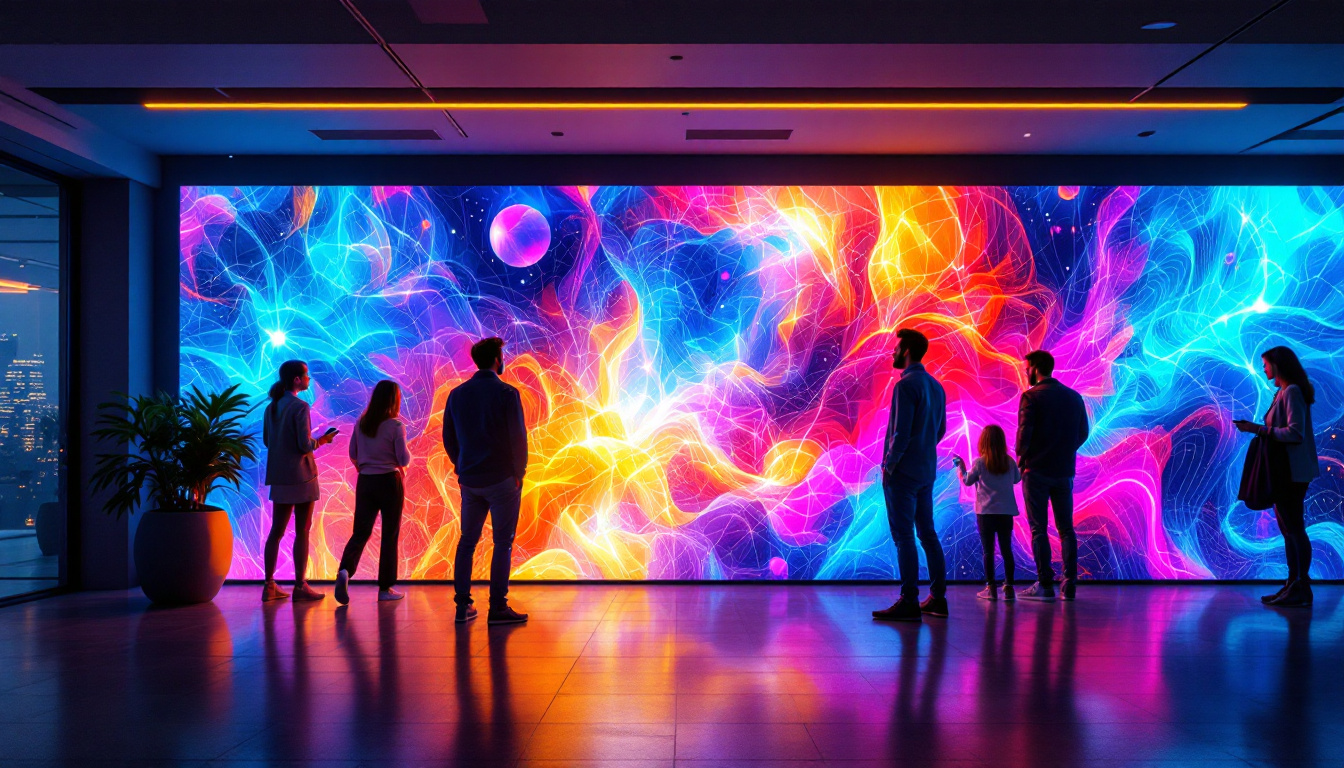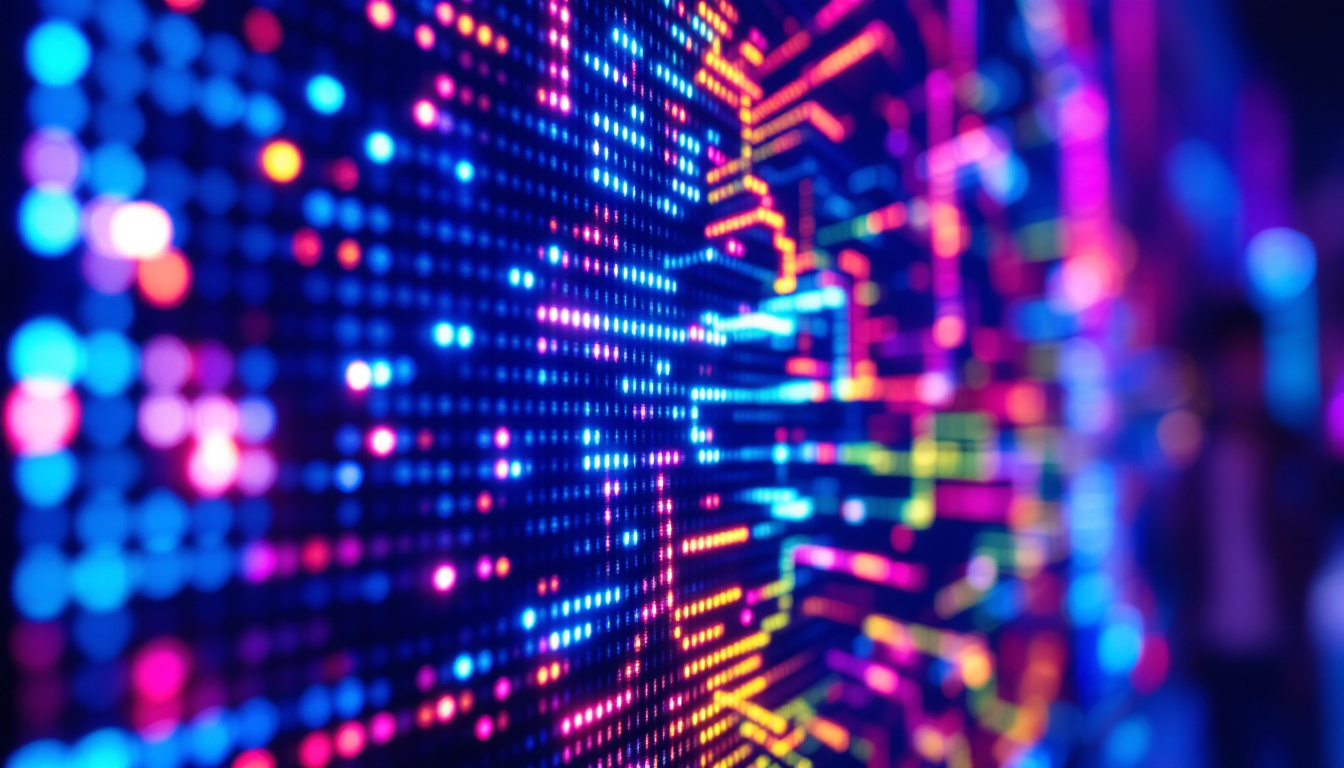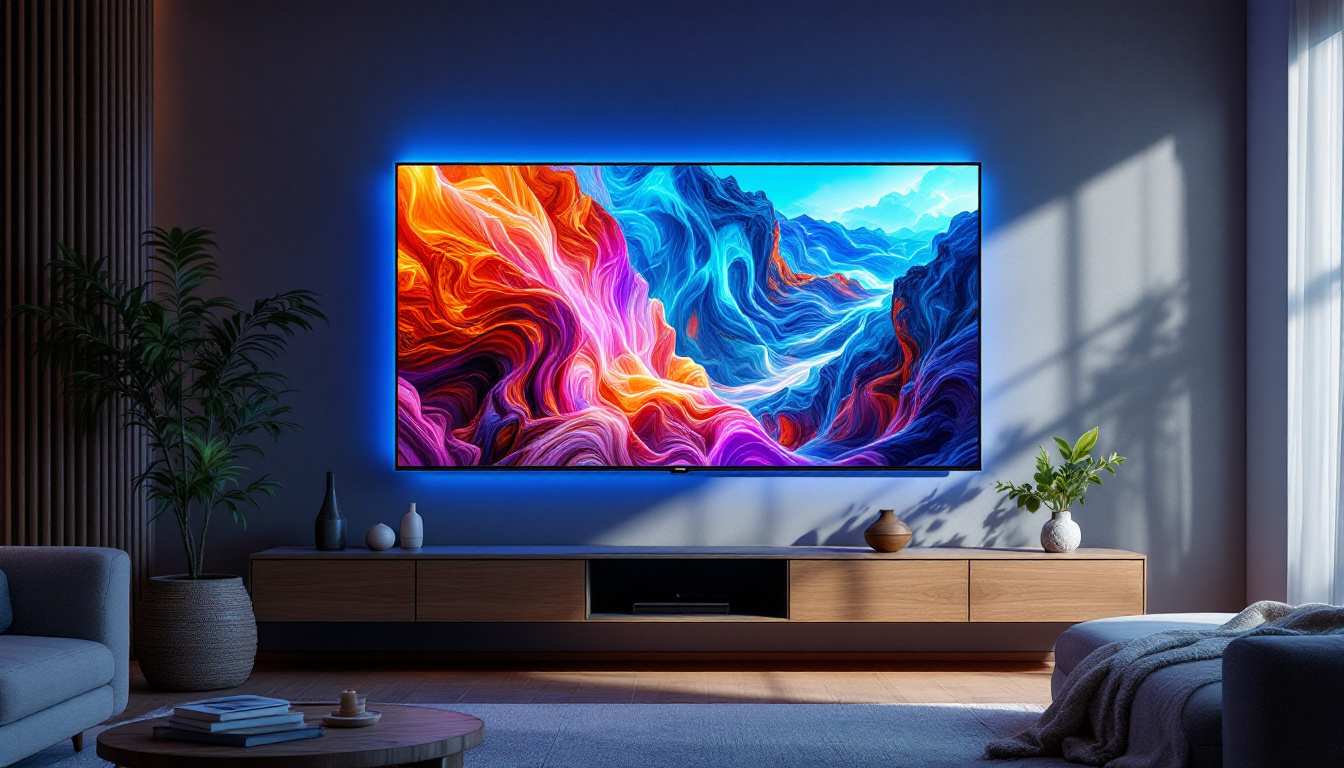In the rapidly evolving world of visual technology, LED video walls have emerged as a leading solution for dynamic displays. These innovative setups are transforming the way businesses, events, and public spaces communicate visually. This article delves into the intricacies of LED video walls, exploring their technology, applications, and benefits.
Understanding LED Technology
LED, or Light Emitting Diode, technology is at the core of modern video walls. Unlike traditional display technologies, LEDs utilize semiconductor materials to emit light when an electric current is applied. This fundamental difference allows for greater brightness, energy efficiency, and longevity in comparison to older technologies such as LCD or projection systems. The advancements in LED technology have not only transformed how we consume media but have also opened up new avenues for creative expression in advertising and public displays.
How LED Displays Work
LED displays consist of numerous tiny diodes arranged in a grid pattern. Each diode can be controlled individually, allowing for precise color and brightness management. This capability is what makes LED video walls so versatile; they can produce vivid images and videos that captivate audiences. The ability to adjust each pixel independently enables dynamic content, where images can shift and change in real-time, creating an engaging experience for viewers.
In an LED video wall, the diodes are grouped into modules, which are then assembled to create a larger display. Each module is designed to ensure seamless integration with adjacent modules, minimizing visible gaps and ensuring a cohesive visual experience. This modular design also facilitates easy maintenance and upgrades. Additionally, the lightweight nature of LED modules allows for flexible installation options, whether mounted on walls, suspended from ceilings, or even integrated into unconventional structures, providing endless possibilities for creative display solutions.
Types of LED Displays
There are several types of LED displays, each suited for different applications. The most common types include:
- Indoor LED Displays: These displays are designed for use in controlled environments, such as shopping malls, conference rooms, and theaters. They typically feature higher pixel densities, resulting in sharper images when viewed from close distances. Indoor displays often incorporate advanced technologies like HDR (High Dynamic Range) to enhance color accuracy and contrast, making them ideal for presentations and immersive experiences.
- Outdoor LED Displays: Built to withstand the elements, outdoor LED displays are brighter and more durable. They are often used for billboards, sports arenas, and public events. These displays are engineered to resist weather conditions such as rain, wind, and extreme temperatures, ensuring reliable performance in any situation. Furthermore, many outdoor models include features like automatic brightness adjustment, which optimizes visibility based on ambient light conditions.
- Transparent LED Displays: These innovative displays allow light to pass through, making them ideal for storefronts and architectural applications. They provide a unique way to showcase content without obstructing visibility. Retailers are increasingly adopting transparent displays to create eye-catching window presentations that attract customers while maintaining a clear view of the products behind them. This technology not only enhances aesthetics but also transforms traditional advertising into a more interactive experience.
Applications of LED Video Walls
LED video walls are versatile and can be employed across various sectors. Their applications range from advertising to entertainment, education, and beyond. Here are some notable uses:
Advertising and Marketing
One of the most prominent applications of LED video walls is in advertising. Brands leverage these displays to create eye-catching advertisements that attract consumer attention. The ability to change content quickly allows for dynamic marketing campaigns, making it easy to promote new products or services in real-time.
Furthermore, the high brightness and vibrant colors of LED displays ensure that advertisements remain visible even in bright daylight, which is a significant advantage for outdoor installations. This adaptability is particularly beneficial in high-traffic areas, where the competition for attention is fierce. As a result, businesses can engage potential customers more effectively, driving foot traffic and boosting sales. Additionally, the integration of interactive elements, such as touch screens or QR codes, allows brands to create immersive experiences that encourage consumer interaction and foster brand loyalty.
Entertainment and Events
In the entertainment industry, LED video walls have revolutionized how audiences experience live events. Concerts, festivals, and sports events utilize these displays to enhance the visual experience. They can showcase live feeds, animations, and graphics that complement the performance, creating an immersive atmosphere. The flexibility in design and configuration of LED walls means they can be tailored to fit any venue, from small clubs to large stadiums, ensuring that every seat in the house has a great view.
Additionally, LED walls are often used in theaters and cinemas to provide stunning visual effects, enriching the storytelling experience for viewers. Beyond traditional performances, they also play a crucial role in virtual events and streaming services, where high-quality visuals are essential for engaging online audiences. The ability to incorporate real-time social media feeds or audience reactions adds another layer of interactivity, making events more engaging and memorable.
Corporate and Educational Settings
In corporate environments, LED video walls serve as powerful tools for presentations and meetings. They enable companies to display data, videos, and graphics in a way that engages employees and stakeholders. This visual approach can enhance understanding and retention of information during discussions. Moreover, the use of LED walls in lobbies and reception areas can create a dynamic first impression, showcasing company achievements, values, and branding in an innovative format.
In educational settings, LED displays are increasingly being used in classrooms and auditoriums. They facilitate interactive learning experiences, allowing educators to present information in a visually stimulating manner that captures students’ attention. With the integration of educational software, these displays can support collaborative projects, enabling students to work together in real-time, regardless of their physical location. This technology not only aids in delivering lectures but also encourages critical thinking and creativity, preparing students for a future where digital literacy is paramount.
Benefits of LED Video Walls
Investing in LED video walls comes with a myriad of benefits that can significantly enhance visual communication strategies. Here are some of the key advantages:
High-Quality Visuals
One of the standout features of LED video walls is their ability to produce high-quality visuals. With superior brightness and contrast ratios, LED displays deliver sharp images and vibrant colors that can be seen clearly from various distances. This quality makes them ideal for both indoor and outdoor applications.
Energy Efficiency
LED technology is known for its energy efficiency. Compared to traditional display technologies, LED video walls consume significantly less power while providing higher brightness levels. This energy efficiency translates to lower operational costs, making LED displays a sustainable choice for businesses.
Longevity and Durability
LED displays are built to last. With a lifespan of up to 100,000 hours, they require less frequent replacements compared to other display technologies. Additionally, outdoor LED displays are designed to withstand harsh weather conditions, ensuring that they remain functional and effective over time.
Installation and Maintenance Considerations
While LED video walls offer numerous advantages, proper installation and maintenance are crucial to maximizing their potential. Understanding these factors can help organizations make informed decisions when investing in LED technology.
Installation Process
The installation of an LED video wall involves several steps, starting with site assessment and planning. Factors such as viewing distance, ambient light conditions, and the intended content must be considered to determine the appropriate display configuration.
Once the planning phase is complete, the actual installation involves mounting the display modules, connecting the necessary wiring, and calibrating the system. Professional installation is recommended to ensure that the display functions optimally and meets safety standards.
Regular Maintenance
To keep LED video walls performing at their best, regular maintenance is essential. This includes cleaning the display surface to remove dust and debris, checking connections, and monitoring performance metrics. Many manufacturers offer maintenance packages to assist organizations in keeping their displays in top condition.
Additionally, software updates and troubleshooting support are critical components of ongoing maintenance, ensuring that the display remains compatible with the latest technology and content formats.
Future Trends in LED Video Walls
The future of LED video walls is promising, with several trends shaping their evolution. As technology continues to advance, new possibilities are emerging that will further enhance the capabilities of these displays.
Integration with Smart Technologies
As smart technology becomes more prevalent, LED video walls are increasingly being integrated with IoT (Internet of Things) devices. This integration allows for real-time data display, interactive content, and enhanced user experiences. For example, businesses can use sensors to adjust brightness based on ambient light conditions, optimizing energy consumption and visual quality.
Higher Resolution and Pixel Density
With advancements in manufacturing techniques, the resolution and pixel density of LED displays are continuously improving. Higher resolution displays enable more detailed images, making them suitable for applications that require precision, such as medical imaging or detailed graphical presentations.
Flexible and Curved Displays
Innovations in LED technology have led to the development of flexible and curved displays. These displays can be shaped to fit unique architectural designs, allowing for creative installations that were previously impossible. This flexibility opens up new opportunities for branding and artistic expression in public spaces.
Conclusion
LED video walls represent a significant advancement in display technology, offering unparalleled visual quality, versatility, and energy efficiency. As businesses and organizations continue to seek innovative ways to engage audiences, LED displays will play an increasingly vital role in visual communication strategies.
Understanding the technology, applications, and benefits of LED video walls is essential for anyone considering this investment. With proper installation and maintenance, LED displays can provide a powerful platform for conveying messages and enhancing experiences across various sectors.
As technology continues to evolve, the future of LED video walls looks bright, promising even more exciting developments that will redefine how we perceive and interact with visual content.
Discover LumenMatrix’s Innovative LED Solutions
Ready to elevate your visual communication with the latest in LED display technology? Look no further than LumenMatrix, where innovation meets excellence. Our comprehensive range of LED display solutions, from Indoor and Outdoor LED Walls to Custom and Transparent Displays, is designed to captivate your audience and amplify your message. Experience the future of digital signage with LumenMatrix and transform your space into a dynamic visual experience. Check out LumenMatrix LED Display Solutions today and take the first step towards redefining engagement.

